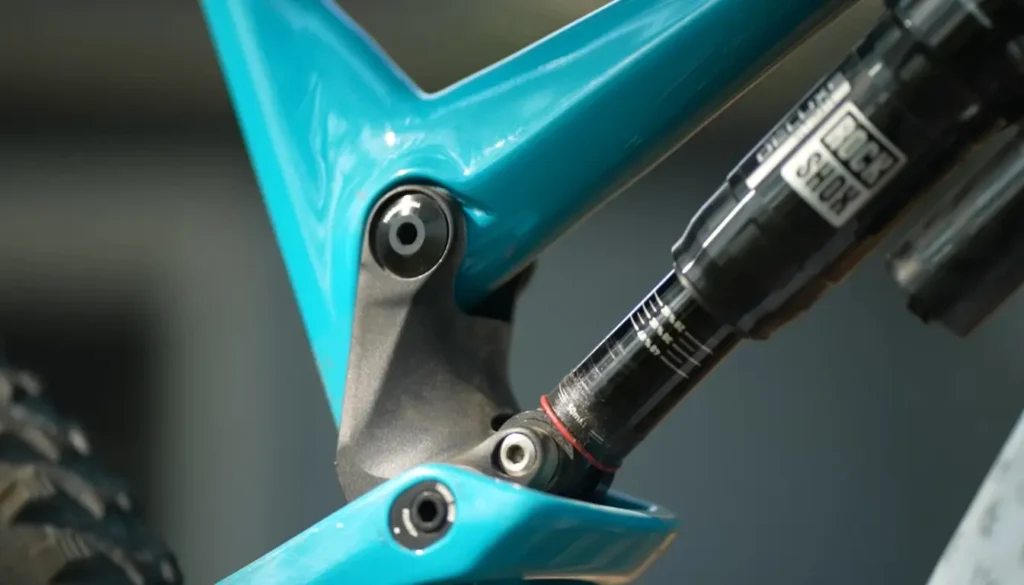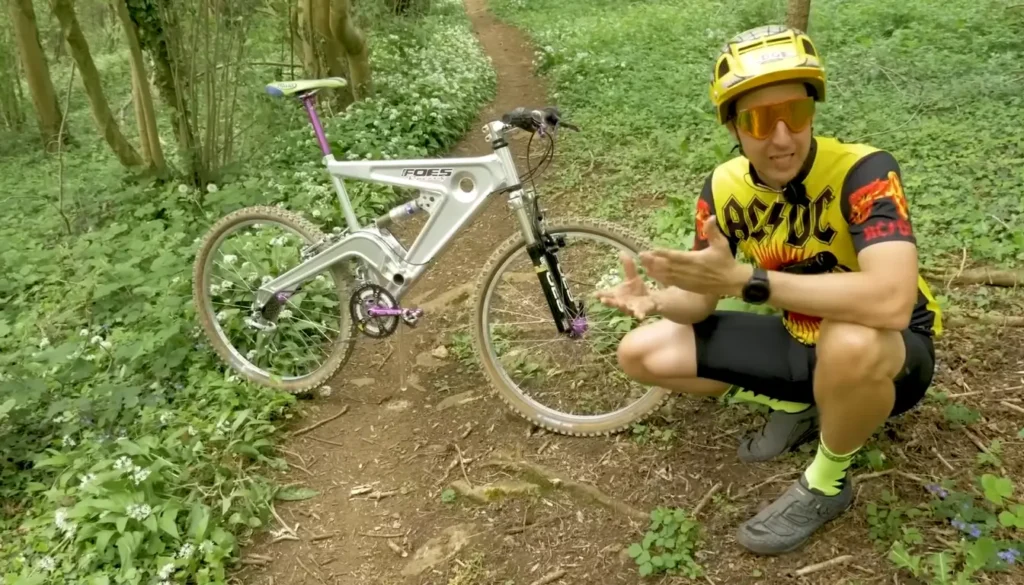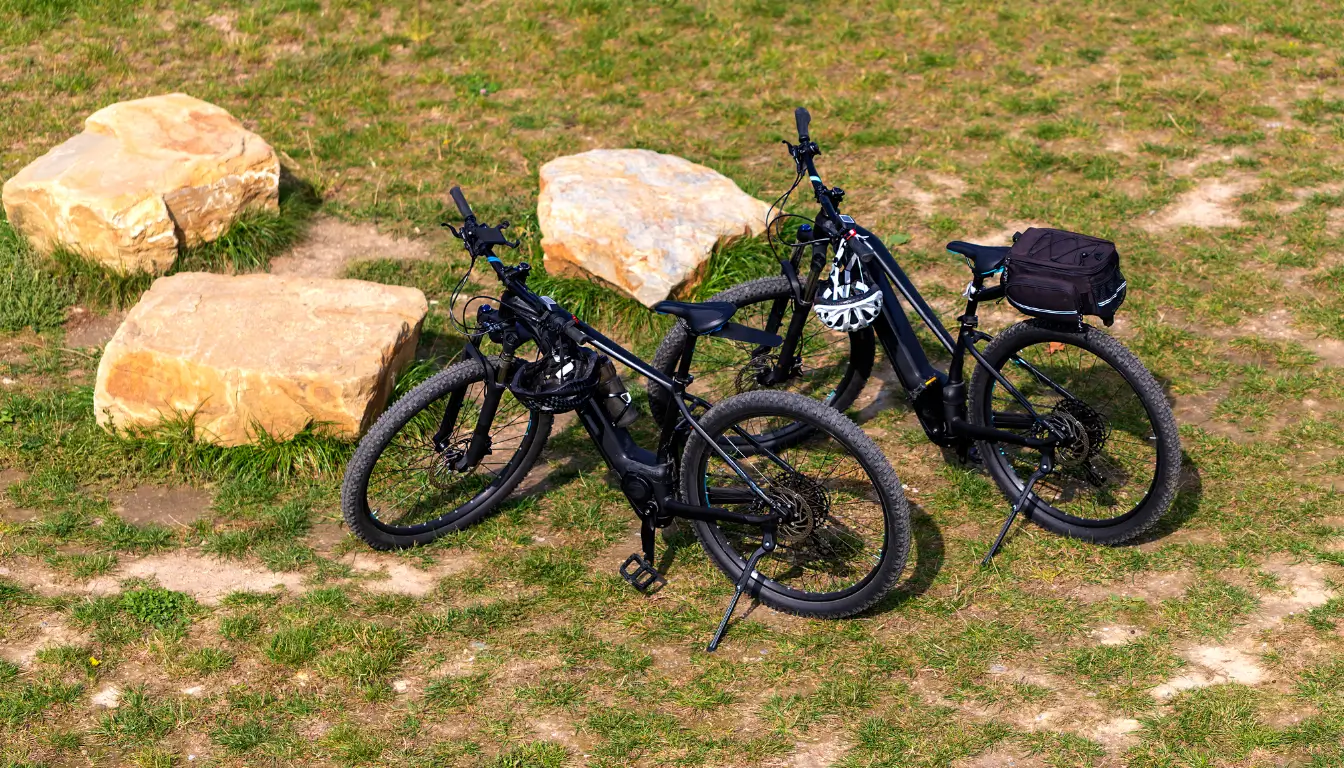The longevity of a mountain bike depends greatly on how well it is maintained. A mountain bike, if cared for properly, can last for over 20 years. This timeframe is extremely flexible and will adapt to your riding habits and preferences.
Wear and tear are inevitable; tires, chains, brake pads, and drivetrains are just some of the things that will need replacing. Preventative maintenance is the key to a long life.
How long does a Mountain Bike Chain last?
The longevity of a chain depends on a wide variety of factors. The duration could be a few months or much longer. 700-800 miles of normal track riding is about the average lifespan of a mountain bike chain.
Leaving your bike out in the rain will cause the chain to rust. This is usually after being exposed to the weather for the first time.
Chain breaking is another common issue for riders of mountain bikes. It can break a linkage in the bike’s drivetrain if it gets caught on something while you’re riding, such as a stick.
In addition, a significant level of friction and other damage your chain goes through can cause it to perform very poorly if you don’t adequately and regularly oil it. If the issue isn’t fixed, a poorly functioning chain will be just as inconvenient as a broken one.
How long does a Mountain Bike Drivetrain Last?
Similar to the chains, the life of a drivetrain also depends on how well it is maintained. The time could range from 6 months to longer. 1500-3000 miles is the usual longevity of a drivetrain. It needs to be replaced afterward
The pedals, chain wheel, rear, and front derailleur, and cassette make up the drivetrain of a mountain bike, which can all fail in a wide variety of ways. Drivetrains are the hearts of mountain bikes and must be taken care of meticulously.
There are two major problems with the cassette and chain wheel. Falling into disuse and staleness. Leave your mountain bike exposed to the rain and humidity, and not only will the chain turn orange, but so will the cassette and chainring.
Because of the high friction levels and abrasive wear that these bare metal components experience, they often lack any sort of finish. Therefore, they rust more easily than other bike components.
How long do Mountain Bike Brakes Last?
The lifespan is affected by many factors, including weather conditions, braking patterns, pad material, riding style, and terrain you ride in. Although the typical range for a resin pad is 600–750 miles, a sintered metal pad can reach 1000–1300 miles.
Levers, brake pads, and brake calipers are all components of a vehicle’s braking system. Additionally, hydraulic or mechanical connections may be present. Your mountain bike’s brakes, regardless of their design, all function by producing friction, which prevents either the back wheel or its front tires from spinning. As a consequence, their presence is of utmost significance to the mountain biking experience.
Simply because they are used, brake pads eventually need to be replaced. Furthermore, any fluids or scum that they get on the disk and the pads can end up causing them to degrade and not function properly.
This can happen if they get either of those things on them. The calipers are susceptible to rusting and breaking, just like the derailleurs are. Both mechanical and hydraulic connections run the risk of rusting and leaking, respectively.
In most cases, the levers do not require replacement; however, adjustment is something that is required to ensure that they continue to function appropriately.
How Long do Mountain Bike Suspensions last?

If you ride your bike moderately, you can expect the shocks to last at least five years. If you ride your bike heavily, you can expect it to last at least three years longer. When performed consistently.
If you ride a lot, you should get your suspension serviced once a year or after at least 80 hours of riding, whichever comes first. Your bike frame will also last longer with regular maintenance performed on it.
If you are not riding a mountain bike with a rigid frame, the suspension is something that, just like anything else, has the potential to become damaged.
This normally occurs as a leak inside the pressure chambers or degradation of a coil. This is not something that can really be planned for, and it’s something that can happen with regular use.
How Long Does a Mountain Bike Frame Last?

The lifespan of a bike frame can range anywhere from six to thirty years, depending on factors such as the material of the frame, how carefully it has been taken care of, and how frequently it is used.
If they are maintained properly, carbon and titanium bike frames have the longest lifespan; in fact, some of these frames will outlive their riders.
Aluminum and steel bicycle frames should comfortably last for six years, but they will need to be maintained regularly in order to continue functioning for any longer than ten years.
Mountain bikes rarely need to have their frames repaired because they are the most durable part of the bike. In addition, is most likely the component that must be replaced at the highest cost.
Because of this, the majority of cyclists will, if there is an issue with the frame, simply conclude that the bicycle is damaged beyond the point of reasonable repair.
If the frame is broken, there is a chance that it can be fixed; however, in most cases, this indicates that you will need to purchase a new bicycle.How to Make Your Mountain Bike Last Longer
In order to help make your mountain bike last longer, certain factors need to be covered. Mainly Maintenance and Storage. This section will cover how to properly take care of your bike.
Maintenance
Each Ride:
● Make sure the mountain bike has the correct tire pressure.
● Lubricate the chain and clean it down to ensure that none of the lubricants gets on the braking mechanism.
● Remove any dust or moisture from the bike with a cleaning.
Weekly:
● Check the thickness of the brake pads, and if they are less than 1mm, replace them.
● Be sure to check the air shocks’ pressure.
● Check that the bolts and wires have the appropriate amount of tension.
Quarterly:
● Replace the fork/rear suspension seals and oil.
● If the liquid is dark, the hydraulic brakes need to be bled and refilled.
● Remove all dirt and oil from the bike’s components.
● If tires need to be replaced, do so. Look around the edge to make sure it’s not deformed.
Yearly:
● Perform a thorough cleaning of all components.
● Reinstall the grips.
● Repair any flaws in the frame or its connection points.
Storage
Without a doubt, the way a mountain bike is stored is the most important factor in determining how long its parts will last. A bike left outside most of the time will simply deteriorate much faster than one that is kept inside.
Furthermore, a bike that is kept dry and clean will last more than one that is dirty or is kept in a wet location. The essential factor is to make sure to keep the bike clean and dry.
If you must store your bike outside, having some kind of protective covering can help protect it. If you lock your bike and leave it outside while at school or work, taking into account the weather and not riding it on rainy days can greatly improve the bike’s longevity. If you must, at the very least, dry and clean the bike before storing it for the night to keep it from rusting.
Conclusion
In general, how well-maintained a bike is and how it is ridden will determine its longevity. The same can be said for individual components of the bike as they, too, need to be replaced timely.
The price of a mountain bike is usually indicative of its quality, and the type of alloy used to construct the frame has a significant impact on the bike’s longevity.
If you don’t ride it the way it was intended to be ridden, it will last forever. But if you do use it, you can count on the usual wear and tear and the occasional breakage.
I hope this article answers all your questions regarding the lifespan of a mountain bike.

I am Ryan Ford, a mountain biking enthusiast who loves to explore the outdoors. I also like to go on adventures with friends and anything else that involves being outside. I love my bike because it gets me out of the house and gives me an opportunity to enjoy nature.

